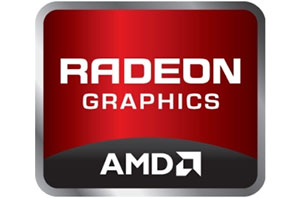AMD Catalyst 13.2 Beta 3 Drivers Released
by Ryan Smith on January 29, 2013 5:00 PM EST

As promised alongside last week’s release of the Catalyst 13.1 WHQL drivers, AMD has shipped out the first public beta for the next version of their drivers this week, Catalyst 13.2 Beta 3.
The latest beta makes a couple of additions that will be of particular interest to hardcore gamers. On the application support side, like NVIDIA’s beta release yesterday these are the first drivers that specifically target Crysis 3, itself having just been released in beta form as a multiplayer beta. AMD is citing up to a 15% performance improvement here in scenarios with high degrees of MSAA, while promising further improvements as the game and the drivers both march towards a final state.
Meanwhile these drivers are also the first driver set from AMD to address some of the frame latency issues Tech Report’s Scott Wasson has turned up over the last couple of months. His own testing of an earlier version of these drivers found that frame latency was significantly reduced in a few different games he tested, including Skyrim, Borderlands 2, and Guild Wars 2.
As always, these latest drivers are available directly from AMD’s site.
Source: AMD










5 Comments
View All Comments
RaistlinZ - Tuesday, January 29, 2013 - link
I have no problems with these and Guild Wars 2. Average frames per second is a bit lower than before, but it is smooth. Haven't tried any other games yet.Khenglish - Tuesday, January 29, 2013 - link
The whole point of an FPS number is to rate how smooth something is. If a game is smoother but the FPS number is lower, then FPS is wrong.Personally I would love to see the next 3dmark rate performance based on the highest latency frame each second. Would really make graphics drivers focus on real performance, which is how smooth something is, instead of some arbitrary and often misleading fps number.
It's ridiculous that it took AMD this long to think of game smoothness instead of blindly focusing on FPS.
Alexvrb - Wednesday, January 30, 2013 - link
He said average frames were lower. If average framerate is down, but minimum framerate is up, it could very well have less stuttering and thus be smoother. Not sure why you think FPS is "wrong". The issue isn't high frame latency all the time, but rather spikes. They're trying to minimize the occurence. Note that Nvidia is not completely immune to this sort of issue from time to time, as well.Death666Angel - Wednesday, January 30, 2013 - link
Read the techreport article, AMD stated that they operated under a false impression ("Up until this point we had mostly assumed that there were occasional flickers in frame rate, but we had thought these were related to the fact that modern games mostly have streaming architectures and limitations of scheduling in the OS."). They didn't pursue "smoothness" because they thought there was nothing they could do about it.blackoctagon - Thursday, January 31, 2013 - link
The point is that FPS is not the ONLY possible indicator of smoothness. Having many frames per second can contribute to increased smoothness, but if the time between the frames is uneven then this can decrease the smoothness. A good example is microstutter (which I experience with my 2 7970s). There are some games for which I can get 170+FPS, but it 'feels' less smooth than does 70FPS on a single card.Also, as Death666Angel already suggested, read the TechReport article